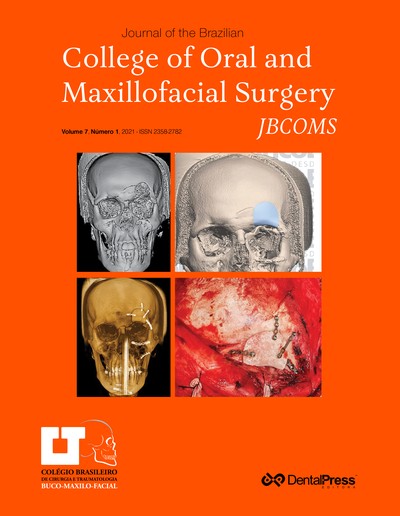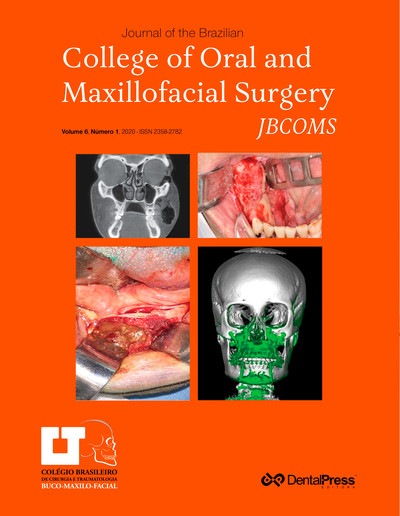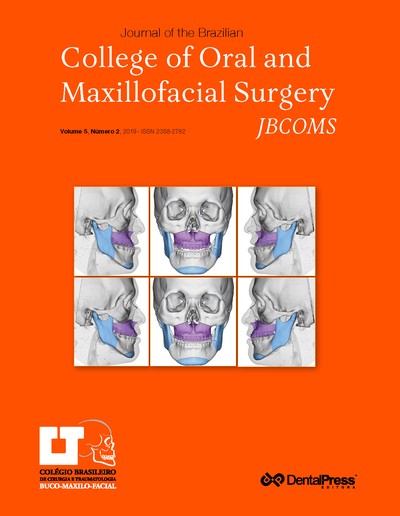
Polymethylmethacrylate in the aesthetic correction of anteroposterior maxillary hypoplasia: a series of 20 cases
WEBER CÉO CAVALCANTE, PAULA RIZÉRIO D’ANDRÉA ESPINHEIRA, KÁTIA MONTANHA ANDRADE, LEONARDO MORAES GODÓI FIGUEIREDO, MARIA CRISTINA CANGUSSÚ, ROBERTO ALMEIDA AZEVEDO
Introduction: Anteroposterior maxillary hypoplasia (AMH), with or without dental discrepancy, has repercussions that cause aesthetic and psychological damage to the patients. Many therapeutic measures have been used for this condition, such as orthognathic surgery and filling with various materials. Methods: This retrospective, observational, and descriptive study evaluated patients with AMH undergoing polymethylmethacrylate (PMMA) implantation, through a series of 20 cases with follow-up for a mean period of four years, treated by means of a technique using PMMA in solid form implanted on the maxillary bone structure laterally to the bilateral pyriform aperture, with safety and predictable results. Results: Among the 20 patients followed-up, three complications were recorded: mild pain was noted upon palpation in one of the implants; displacement of one of the implants, requiring removal; and mild paresthesia of the central incisor, without loss of pulp vitality, in the third case. Fifteen (75%) patients were very satisfied and five (25%) were satisfied with the aesthetic result. No patient was dissatisfied. Conclusion: The aesthetic resolution of AMH with PMMA proved to be an efficient form of treatment, with a low rate of complications and a good grade of patient satisfaction on long-term follow up.
Keywords: Orthognathic surgery. Polymethyl methacrylate. Prostheses and implants.
How to cite: Cavalcante WC, Espinheira PRD, Andrade KM, Figueiredo LMG, Cangussú MC, Azevedo RA. Polymethylmethacrylate in the aesthetic correction of anteroposterior maxillary hypoplasia: a series of 20 cases. J Braz Coll Oral Maxillofac Surg. 2021 Sept-Dec;7(3):64-70.
Friday, May 10, 2024 14:44










